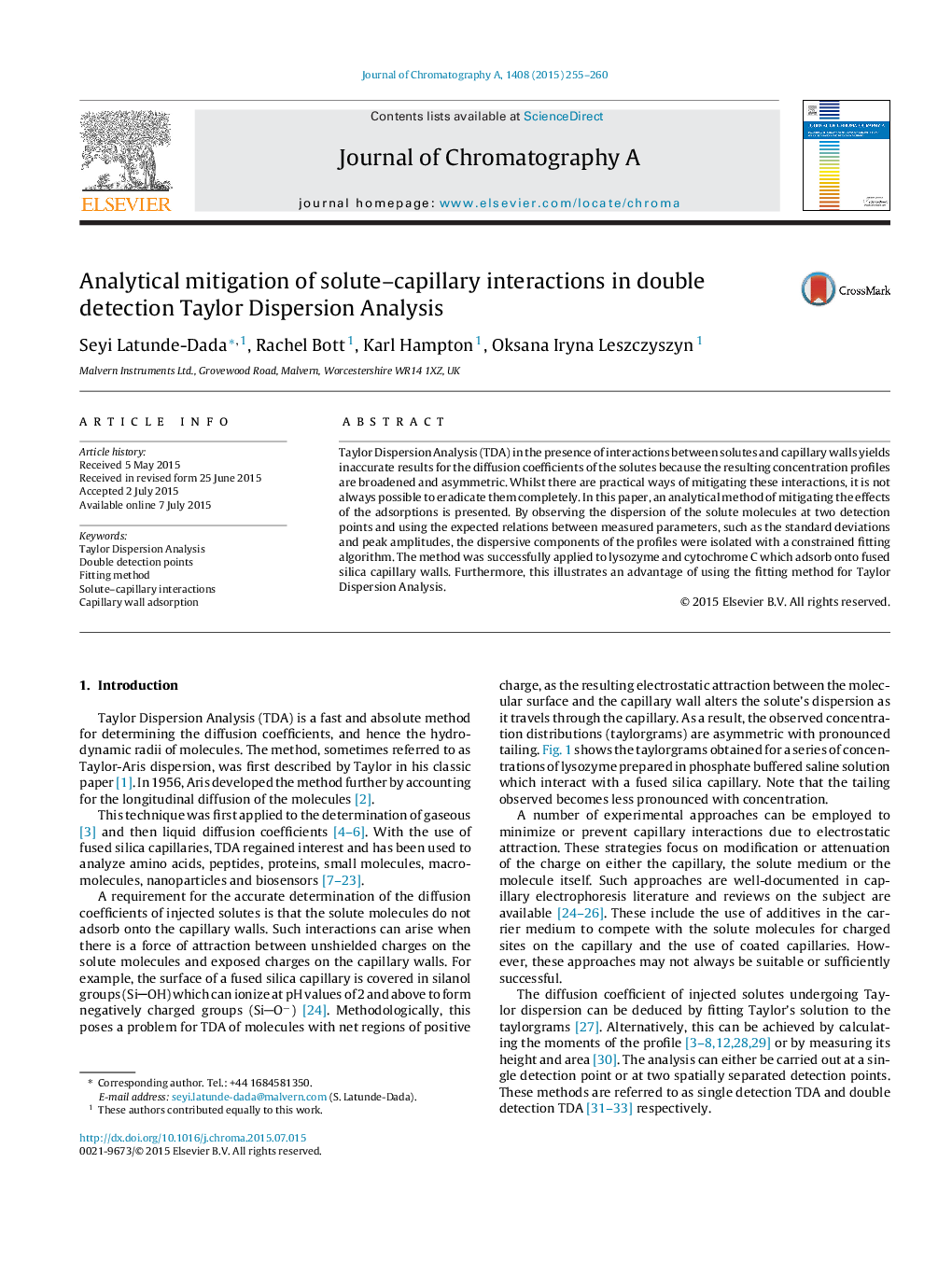| Article ID | Journal | Published Year | Pages | File Type |
|---|---|---|---|---|
| 7611704 | Journal of Chromatography A | 2015 | 6 Pages |
Abstract
Taylor Dispersion Analysis (TDA) in the presence of interactions between solutes and capillary walls yields inaccurate results for the diffusion coefficients of the solutes because the resulting concentration profiles are broadened and asymmetric. Whilst there are practical ways of mitigating these interactions, it is not always possible to eradicate them completely. In this paper, an analytical method of mitigating the effects of the adsorptions is presented. By observing the dispersion of the solute molecules at two detection points and using the expected relations between measured parameters, such as the standard deviations and peak amplitudes, the dispersive components of the profiles were isolated with a constrained fitting algorithm. The method was successfully applied to lysozyme and cytochrome C which adsorb onto fused silica capillary walls. Furthermore, this illustrates an advantage of using the fitting method for Taylor Dispersion Analysis.
Related Topics
Physical Sciences and Engineering
Chemistry
Analytical Chemistry
Authors
Seyi Latunde-Dada, Rachel Bott, Karl Hampton, Oksana Iryna Leszczyszyn,
